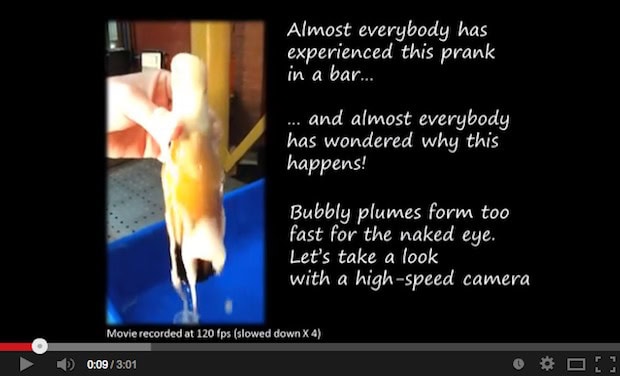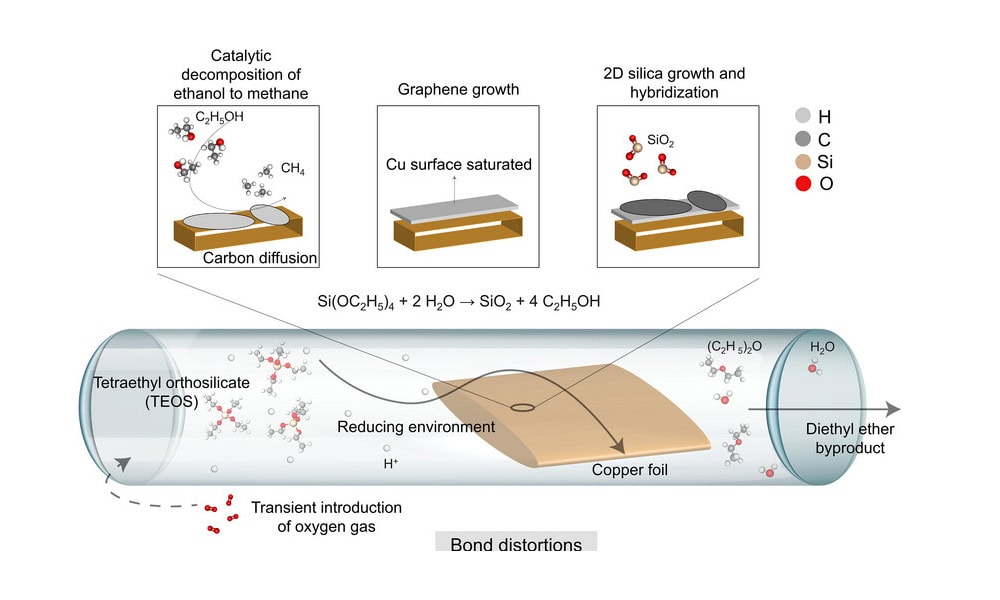
[Image above] Credit: Francis Villatoro; YouTube

Credit: Francis Villatoro; YouTube
A couple of weeks ago, Eileen reported on how physics—specifically, fluid dynamics—applied to the question of what makes a teakettle whistle could one day help reduce unwanted noise from, for example, pipes in buildings or high-speed hand dryers.
This week, the focus is on a beverage many would argue is more fun than tea, and nearly as popular. According to a news release from the American Physical Society, scientists have gone to work to gain insight on the age-old phenomenon of copious amounts of foam spewing from “tapped” beer bottles.
The answer once again lies in the science of fluid dynamics—in this case, the phenomenon of cavitation. Researchers from Spain’s Carlos III University and France’s Université Pierre et Marie Curie presented their foamy findings on the topic at the recent annual meeting of APS’s Division of Fluid Dynamics and explain their results in the video above.
As it demonstrates (and as many of us have experienced first-hand), a sudden impact against a bottle’s mouth can cause the bubbly brew inside to spew all over the place. According to the APS news release, “back and forth movement of compression and expansion waves will cause bubbles to appear and quickly collapse. The team’s investigation of beer bottle–fluid interactions demonstrated that the cavitation-induced break-up of larger ‘mother’ bubbles creates clouds of very small carbonic gas ‘daughter bubbles,’ which grow and expand much faster than the larger mother-bubbles from which they split.”
It’s these smaller, faster-growing bubbles that give the foam buoyancy, and “buoyancy leads to the formation of plumes full of bubbles, whose shape resembles very much the mushrooms seen after powerful explosions,” lead researcher Javier Rodriguez-Rodriguez explains. “And here is what really makes the formation of foam so explosive: the larger the bubbles get, the faster they rise, and the other way around.”
The research may seem like a long way to go to explain what is basically a happy hour prank, but the researchers were earnest enough to focus a high-energy laser pulse inside a bottle of suds to produce the same results as “tapping.” Similarly, their findings might see more serious application wherever, for example, cavitation erosion is a materials issue. According to the APS news release, the results might also be applicable to explaining phenomena such as the sudden release of dissolved carbon dioxide from Lake Nyos in Cameroon that killed more than 1,700 people in 1986.
Maybe you’re content simply to amaze (or possibly bore) your friends with a scientific explanation of why beer “tapping” works so explosively well. If that’s the case, enjoy in moderation, store your suds properly, and stay thirsty, my friends.
Author
Jim Destfani
CTT Categories
- Material Innovations


